Written by Tringi Studies
Results and Conclusions
The results of the research on respiratory parameters, specifically the vital capacity of the age group 20-35 years in the cities of Pristina, Fushë Kosovë, and Obiliq, as well as the control area, the village of Bllacë (Suharekë). These results are presented in both tabular and graphical forms, separated by age group and gender.
Table 1. The average values of respiratory and bodily parameters for the age group 20–35 years in the cities of Pristina, Fushë Kosovë, Obiliq, and the control area Suharekë.
| A | B | C | P | |
| F | Prishtinë (N=15) | FushëKosovë/Obiliq (N=10) | Suharekë (N=15) | |
| VC | 3.57 ± 0.34 | 3.49 ± 0.35 | 3.57 ± 0.41 | AxC p>0.05 BxC p>0.05 |
| Pred-VC | 3.25 ± 0.08 | 3.21 ± 0.11 | 3.12 ± 0.12 | AxC p>0.05 BxC p>0.05 |
| STr | 1.71 ± 0.15 | 1.72 ± 0.13 | 1.71 ± 0.19 | AxC p>0.05 BxC p>0.05 |
| M | Prishtinë (N=15) | FushëKosovë/Obiliq (N=10) | Suharekë (N=15) | P |
| VC | 4.69 ± 0.97 | 4.30 ± 0.96 | 4.29 ± 0.53 | AxC p>0.05 BxC p>0.05 |
| Pred-VC | 4.46 ± 0.21 | 4.36 ± 0.24 | 4.34 ± 0.18 | AxC p>0.05 BxC p>0.05 |
| STr | 2.05 ± 0.17 | 2.06 ± 0.27 | 1.91 ± 0.14 | AxC p>0.05 BxC p>0.05 |
The results from Table 1 show that for females in the age group 20-35 years, the vital capacity is significantly higher than the predicted vital capacity for all three cities with the same body surface area. It can be observed that there are no significant differences for females in this age group.
The results for males in the age group 20-35 years show that there are no significant differences in the vital capacity values across the three cities.
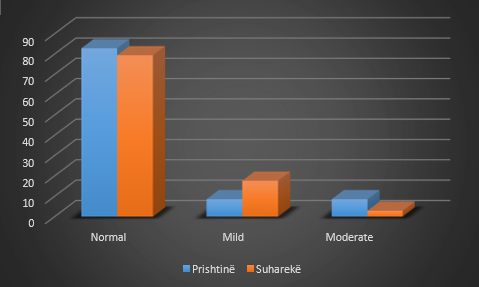
Assessment of symptoms for surface eye diseases is conducted through the OSDI test.
The results showed that the assessment of ocular surface symptoms was normal for individuals from Pristina and Suhareka. Mild symptoms were more prevalent among individuals from Suhareka and less prevalent in individuals from Pristina, and as such, these are not considered threatening for the individuals.
The assessment of ocular surface symptoms was moderate at a higher percentage among individuals from Pristina, which may be considered concerning, while in individuals from Suhareka, the percentage was lower, and these symptoms are not considered concerning for these individuals.
Table 2. Numerical values of the responses
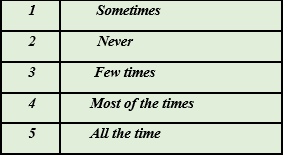
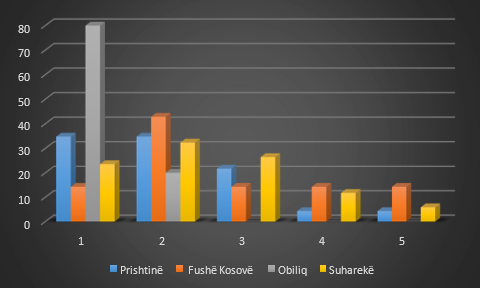
Fig. 2.1. Graphical representation of the question ‘The eyes are sensitive to light?
The data presented in the graph are as follows:
Individuals aged 20-35 years from Obiliq showed a high percentage of light insensitivity. Meanwhile, individuals from Fushë Kosova are, to a greater extent, sensitive to light throughout the day, while individuals from Prishtina showed a lower percentage.
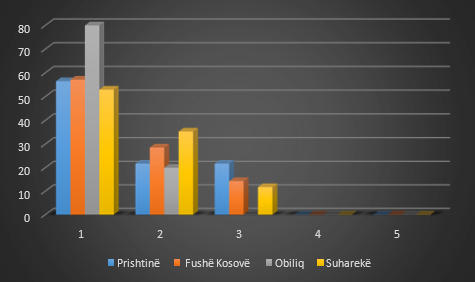
Fig. 2.2. Graphical representation of the question “Do your eyes feel irritated?”
The data presented in the graph are as follows:
The data show that individuals from Prishtina and Fushë Kosova, in a significant percentage, sometimes experience symptoms of eye irritation. In a higher percentage, individuals from Obiliq, Prishtina, Fushë Kosova, and Suhareka do not feel irritated at all.
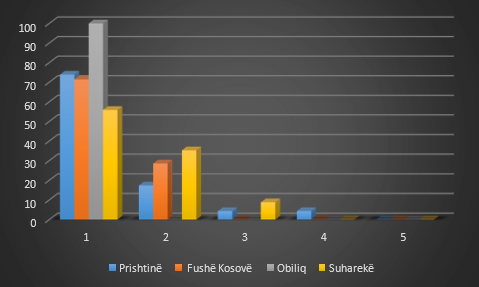
Fig. 2.3. Graphic representation of the question Pain or dryness?
In the presented graph, we have obtained the following data as shown below:
The results show that individuals from Obiliq, Prishtina, Fushë Kosova, and Suhareka report, in high percentages, that their eyes do not feel any pain or dryness. It is worth noting that individuals from Prishtina, in a higher percentage, face this issue most of the time.
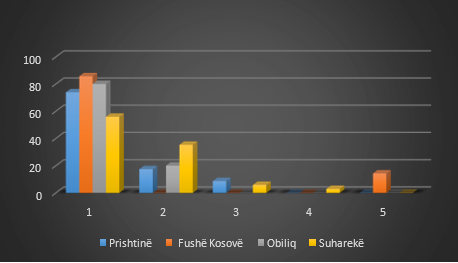
Fig. 2.4. Graphical representation of the question “Blurry vision”
In the presented graph, we have obtained the following data as shown below:
The results show that a high percentage of individuals from Fushë Kosova, Obiliq, Prishtina, and Suhareka do not experience blurry vision at all. On the other hand, individuals from Fushë Kosova frequently experience blurry vision throughout the entire time, while individuals from Suhareka experience it most of the time.
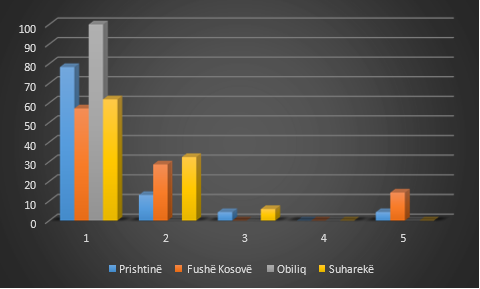
Fig. 2.5. Graphical representation of the question “Poor vision.”?
In the presented graph, we have obtained the following data as shown below:
The results show that individuals from Obiliq and Prishtina, in high percentages, never experience poor vision. Individuals from Fushë Kosova experience poor vision all the time, while individuals from Suhareka experience it occasionally in lower percentages.
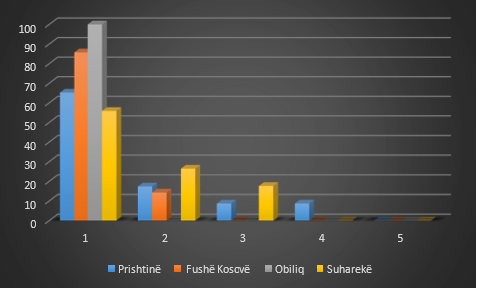
Fig .2.6. The graphical representation of the question “In reading”.
In the presented graph, we obtained the following data as shown below:
The results have shown that individuals from Obiliq and Prishtina, in a high percentage, do not face poor vision while reading. It is worth mentioning that most of the time, individuals from Prishtina experience this issue, with a lower percentage of individuals from Suhareka facing it.

Fig. 2.7. Graphical Representation of the Question: “Driving at Night”
From the chart presented, we obtained the following data:
The results showed that individuals from Obiliq, Fushë Kosovë, and Prishtina reported, in high percentages, no difficulties when driving at night.
On the other hand, some respondents from Prishtina consistently experienced problems during nighttime driving, while individuals from Suhareka reported facing similar issues most of the time.
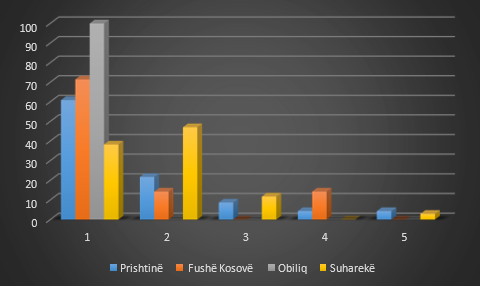
Fig. 2.8. Graphical Representation of the Question: “When Do You Use the Computer”
The chart presented provided us with the following data:
The results showed that individuals from Obiliq and Fushë Kosovë, in high percentages, reported never experiencing problems while working on a computer.
However, a significant portion of respondents from Fushë Kosovë stated that they often encounter difficulties during computer use. Additionally, individuals from Prishtina reported facing such problems consistently.

Fig. 2.9. Graphical Representation of the Question: “When Do You Watch TV”
The chart presented provided us with the following data:
The results indicate that a high percentage of individuals aged 20–35 from Obiliq, Prishtina, and Fushë Kosovë reported having no issues at all when watching TV.
In contrast, respondents from Fushë Kosovë stated that they consistently experience problems while watching TV. Additionally, a considerable percentage of individuals from Suhareka reported occasionally facing similar difficulties.
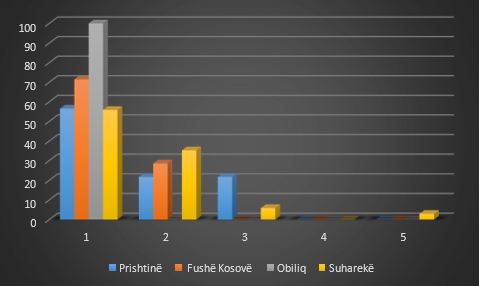
Fig .3. Graphical Representation of the Question: “Windy Conditions”
The chart presented provided us with the following data:
The results showed that individuals aged 20–35 from Obiliq, Fushë Kosovë, Prishtina, and Suhareka generally reported no difficulties with windy conditions. However ,
However, a high percentage of respondents in the same age group from Prishtina stated that they do experience problems in such conditions, and individuals from Suhareka reported facing these issues consistently.
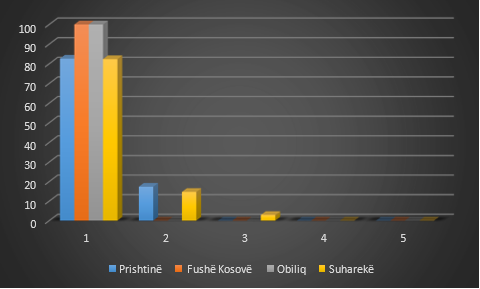
Fig. 3.1. Graphical Representation of the Question: “Places or Areas with Low Humidity (Very Dry Environments)
The chart presented provided us with the following data:
The results showed that individuals aged 20–35 from Obiliq and Fushë Kosovë do not encounter any issues related to this condition. In contrast, a high percentage of respondents from Suhareka reported experiencing problems in places with low humidity or very dry environments.
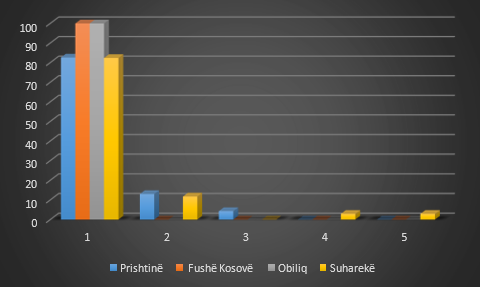
Fig .3.2 Graphical Representation of “Air-Conditioned Environments”
The chart presented provided us with the following data:
The results showed that a high percentage of individuals aged 20–35 from Obiliq and Fushë Kosovë do not experience problems in air-conditioned environments. In contrast, a considerable percentage of respondents from Suhareka reported facing difficulties in such conditions.
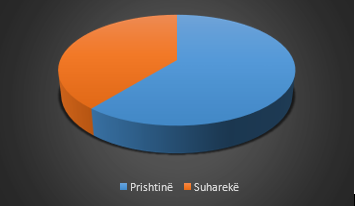
Fig. 3.3 Graphical Representation of Individuals Who Smoke
The results showed that individuals aged 20–35, both female and male, from Prishtina are smokers at a significantly higher percentage compared to those from Suhareka.
Discussion
Air pollution is a major global concern with well-documented toxicological impacts on both human health and the environment. Airborne pollutants
Airborne pollutants know no borders, and as such, Kosovo also faces this issue on a national level.
The primary contributors to air pollution include energy production, transportation, industrial activities, and both urban and industrial waste sites. These sources are associated with a range of environmental and public health challenges.
In many developing countries, reliance on biomass and coal for heating and cooking contributes significantly to air quality degradation. Exposure to pollutants from these sources has been linked to respiratory discomfort and a potential increase in environmentally related health concerns (Kurt, Zhang, & Pinkerton, 2016). In response, health professionals are encouraged to consider environmental factors when evaluating patient exposure in various settings, including homes, workplaces, and residential areas (Arbex et al., 2012).
Air pollution in urban areas is increasingly regarded as a serious public health issue (Kelly & Fussell, 2011). Research suggests that women may report higher sensitivity to outdoor air quality compared to men, with greater instances of discomfort when exposed to external environments (Al-Shidi, Ambusaidi, & Sulaiman, 2021).
Elevated concentrations of air pollutants have been observed to correlate with reduced respiratory efficiency and increased rates of respiratory-related symptoms, particularly among individuals in high-exposure occupations, those with moderate household incomes, and those with pre-existing vulnerabilities (Doiron et al., 2019).
Long-term exposure to airborne pollutants has been associated with symptoms such as nasal irritation, coughing, phlegm production, and chest discomfort — as reported in observational studies (Ontawong, Saokaew, Jamroendararasame, & Duangjai, 2020).
Conclusion
Based on the findings of this research, we conclude the following:
- Among female individuals aged 20–35, there were no statistically significant differences in vital capacity values across the cities of Prishtina, Fushë Kosovë/Obiliq, and Suhareka.
- Similarly, male individuals aged 20–35 also showed no statistically significant differences in vital capacity values.
- The assessment of ocular surface-related symptoms was, in a high percentage of cases, considered normal and non-concerning for both male and female individuals in the 20–35 age group.
- In some individuals of the same age group, a smaller percentage reported experiencing mild to moderate symptoms, which could become more noticeable or relevant in the future.
- Based on these results, further research using the same equipment and tests is recommended to better understand how air quality may influence physiological parameters of the lungs and eyes across different age groups and between genders.
Abstract
The purpose of this research is to assess the impact of air pollution on the physiological parameters of the lungs and eyes in individuals aged 20–35 years across the cities of Prishtina, Fushë Kosovë, Obiliq, and Suhareka.
The study focuses on evaluating how air quality may influence respiratory function, related health concerns, and eye surface discomfort in this age group.
The research was conducted between June and December 2022 in three municipalities in Kosovo.
It aims to understand the extent of individual exposure to poor air quality, identify which age groups and cities are more affected, and explore how individuals manage and respond to these challenges.
To carry out this study, two tools were used:
- A spirometer, to measure vital lung capacity,
- The OSDI (Ocular Surface Disease Index) test, to assess the presence of symptoms related to ocular surface discomfort.
References
Kurt, O. K., Zhang, J., & Pinkerton, K. E. (2016).
Pulmonary Health Effects of Air Pollution.
Current Opinion in Pulmonary Medicine, 22(2), 138–143.
Arbex, M. A., Santos, U. d., Martins, L. C., Saldiva, P. H., Pereira, L. A., & Braga, A. F. (2012).
Air pollution and the respiratory system.
Jornal Brasileiro de Pneumologia, 38(5), 643–655.
Kelly, F. J., & Fussell, J. C. (2011).
Air pollution and airway disease.
Clinical & Experimental Allergy, 41(8), 1059–1071.
Al-Shidi, H. K., Ambusaidi, A. K., & Sulaiman, H. (2021).
Public awareness, perceptions and attitudes on air pollution and its health effects in Muscat, Oman.
Journal of the Air & Waste Management Association.
Doiron, D., Hoogh, K. d., Hensch, N. P., Fortier, I., Cai, Y., Matteis, S. D., & Hansell, A. L. (2019).
Air pollution, lung function and COPD: Results from the population-based UK Biobank study.
European Respiratory Journal, 54: 1802140.
Ontawong, A., Saokaew, S., Jamroendararasame, B., & Duangjai, A. (2020).
Impact of long-term exposure to wildfire smog on respiratory health outcomes.
Expert Review of Respiratory Medicine.
Disclaimer: This article is for informational and educational purposes only. It does not constitute medical or professional advice.